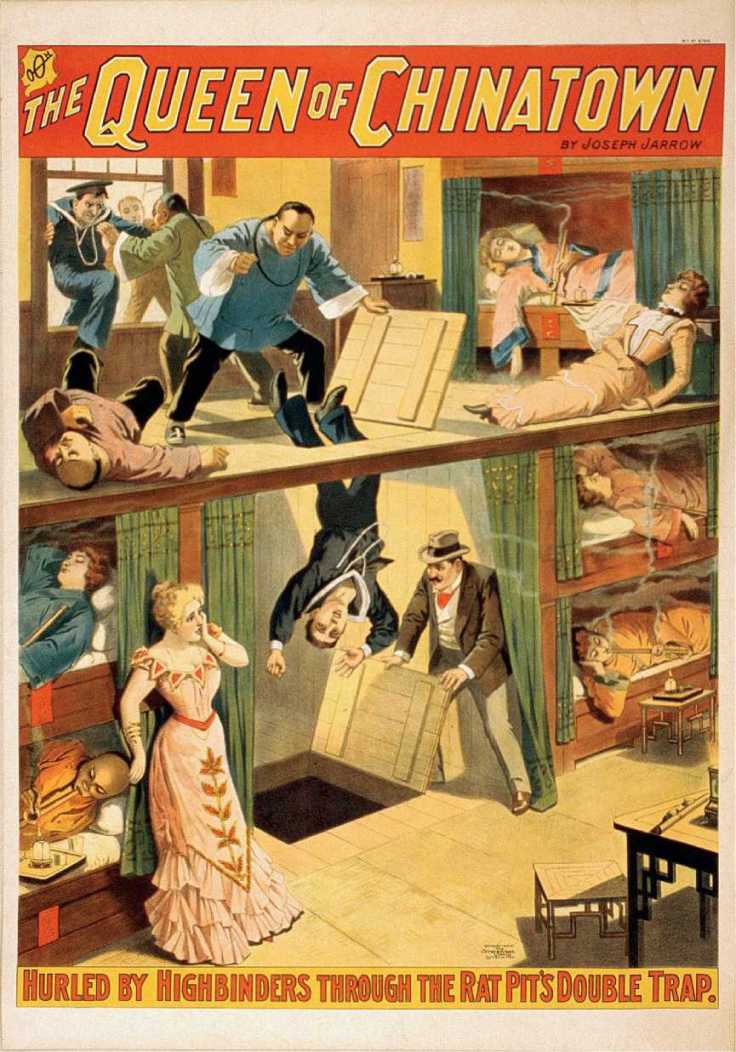Laws regarding drugs are designed to protect people from harmful, even deadly substances. At least, that is the rationale predominantly given. Yet, it is not always the drug itself that laws are created to guard against.
Professor of Political Science and Criminal Justice Diana R. Gordon argues that public policies and legislation regarding drugs have been used to solve problems in scarcity or overabundance of labor. In 1868, 12,000 Chinese laborers were employed by the Central Pacific Railroad to help build the Transcontinental Railroad. In May 1969, the massive project was complete. In an effort to reduce the number of Chinese immigrating and living in the US, exclusionary laws specifically targeting the Chinese were passed. Some of these laws directly targeting Chinese immigrants were guised as policies against drug use, specifically smoking opium.
According to Gordon, opium was the first drug that was the subject of a prohibition law, yet it was not opium itself that was under scrutiny. The 1875 the San Francisco Opium Den Ordinance prohibited smoking in opium dens. A rise in opium smoking in the US had been linked to Chinese immigrants well before the passing of the ordinance. Timothy Hickman’s Drugs and Race in American Culture recounts the portrayal of opium use in relation to the Chinese. Orientalism was linked to opium smoking, addiction, and marked as a threat to American values.

Chinese immigrants were blamed for an increasing number of white American’s addicted to opium, particularly those who became addicted due to smoking. The Chinese were painted as demonic, subhuman, conniving, opium addicts who were parasitic for the US economy. They were viewed as lazy, and in an ironic twist, accused of taking American’s jobs. Hickman writes, the orient was portrayed as “non-productive, unpeopled, and uncivilized…the antithesis of modern America.” Lawmakers fed off the fear of these “Chinese mongrels” who “threatened to seduce the honorable,” particularly threatening innocent women and children. Media was distributed by way of cartoons and news articles by medical professionals warning readers of the evil Chinese invading the US.
The idea that opium originated from China is still a common misconception. Although opium was imported from China, it was not a crop native to the orient, nor was it a product that the Chinese government wanted in their country. In The Wars of the Poppies, Leslie Marchant notes that opium came to China from the Arabs some point between early 600-900 AD for medicinal purposes and concerns over a developing drug culture in China developed in the mid-16th century with the imports of tobacco, opium, and the pipe from the Portuguese. China attempted to regulate opium use and restrict imports, even instilling a zero tolerance policy in the mid-1800’s. However, Britain, who was also cashing in on the opium trade, fought two wars to retain the right to bring opium to China.
Drugs play a role in every demographic within the United States, be it classified by race, gender, ethnicity, socio-political, religious or economic status. Although some drugs may be more prevalent among certain groups than others, the perception of drug use as exclusive to a community should rarely be taken as truth. Theories on how to respond to drug use also shift dramatically depending on the status the person has in the hierarchy of America’s social structure.
The most notable pattern that I have noticed this far into examining drug cultures in America is the tendency to place blame on white, middle-class addictions on groups or factors outside of the person’s control, or if someone from this demographic is seen as responsible for their actions, they become outcasts, disassociated with the ideal of the virtuous, hard-working, white-collar American. Drugs and drug users are portrayed in such a way that protects the image of the ideal “American”. Ideas about drug us and abuse are also manipulated in plays for power and can create a more divided and tense society.



Leave a comment